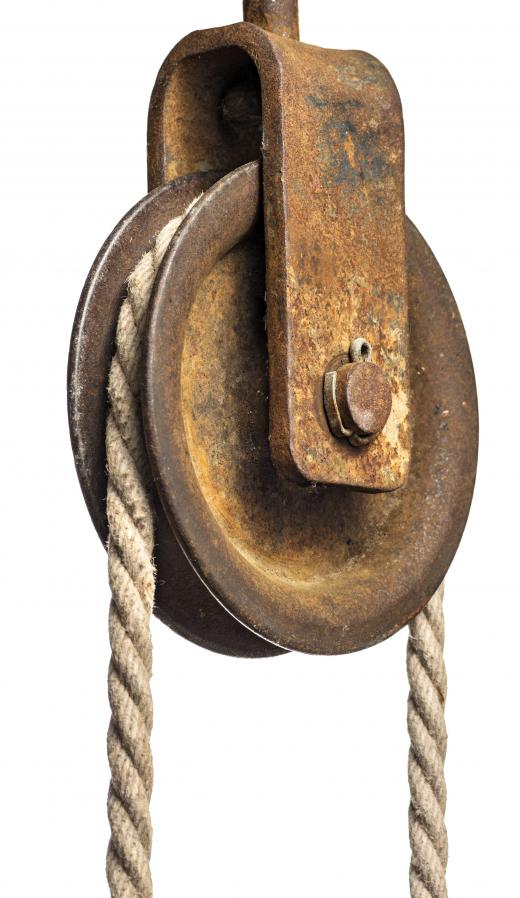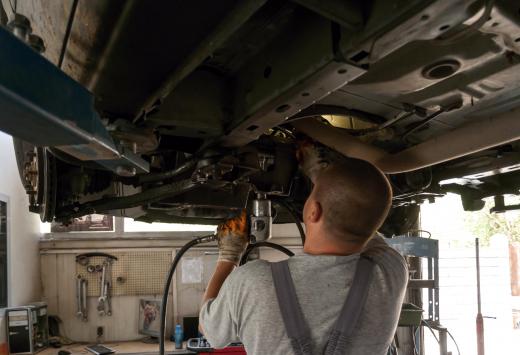Hoists are units that are designed to lift heavy objects and move those objects from one location to another. Hoist equipment can vary significantly according to the type of hoist, the location in which the hoist will be used, the items being lifted, and the purpose of the hoist in general. Sometimes hoist equipment simply includes the components of the system itself, such as pulley wheels, cables, ropes, and so on, while in other cases, the equipment may include mounting hardware, hydraulic cylinders, and other items that make the hoist usable.
Most hoists use some sort of pulley system; pulleys are wheels that are specially designed to guide a rope, cable, belt, or chain, and they are usually mounted on an axle to allow the wheel to spin freely. These pulleys can be mounted to a motor that spins the unit to control the feed of cable, while in other cases, they might be hand-operated. Other hoist equipment may include any of the controls for a motorized pulley unit, the motor itself, and the pulley housing that can be mounted to solid surfaces for greater stability.

The hoist can be mounted to a trolley, which is a frame that features wheels that can move along a track. The hoist equipment needed for such a set-up includes the track itself, which is usually a heavy metal mounted high above the ground; the trolley, which is also usually metal and features wheels designed to work in conjunction with the track; and mounting hardware to ensure all elements are stable for use. The pulley itself can vary in design, but usually it is mounted to the trolley and features a motorized pulley system that feeds out cable or chains.

Sometimes a jib boom system is used; hoist equipment associated with such a system may include the boom arm, which is attached to a vertical post. This system often swivels so a user can both lift an item and transport it to a different location by swinging the boom arm in a different direction. Mounting hardware will be needed to ensure this unit is stable and affixed to a solid platform. If the jib boom is meant for use on a pickup truck, the unit must be mounted either to the bed of the truck or to the frame underneath the bed; this is accomplished with special mounting hardware.
